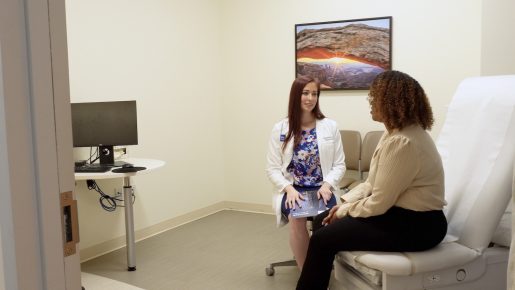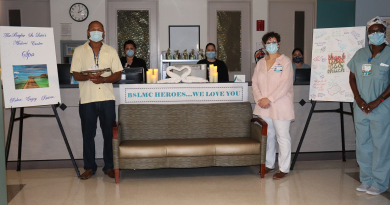What is a hernia and what is component separation?
 Hernias are relatively common health issues that often require surgery to repair. Information below addresses basic information about hernias and common questions about treatment.
Hernias are relatively common health issues that often require surgery to repair. Information below addresses basic information about hernias and common questions about treatment.
What is a hernia?
A hernia is a hole in the belly tissues through which some fat or intestine can pass, causing abdominal bulging and possibly abdominal pain.
The belly wall is made up of many layers of tissue, including:
- Peritoneum: The innermost lining of the belly wall.
- Fascia: A thick layer of connective tissue that covers the whole body.
- Muscles: Rectus muscles (six pack muscles), transversus abdominis, internal obliques, external obliques.
- Fat
- Skin
How do we treat hernias?
There is no way to repair hernias without surgery; however, some hernias may be safe to monitor closely.
The goal of hernia repair is to bring the tissues/muscles from around the hole back together. In some instances, we will place a piece of mesh over this area to strengthen the repair and decrease the risk of hernia recurrence.
When is component separation needed?
Some hernias are so large (10 or more centimeters) or have such weak surrounding tissues that we cannot get the surrounding tissues back together; the muscles are too tight to bring them to meet in the middle of the abdomen. In this case, your surgeon may perform a component separation, which involves teasing out the connective tissues between muscle layers on the sides of the belly to allow more stretch for us to get your muscles back together in the middle to close the hernia.
Is mesh still used?
Mesh is used to strengthen the area surrounding a hernia repair. Tissues around a hernia are weaker than tissues in an area without a hernia. Even after tissues are brought back together to close a hernia, those tissues are still weak from the hernia’s presence and are at increased risk of another hernia in the future. To decrease this risk, we place mesh to strengthen these tissues.
However, even with the mesh in place, these tissues are still weaker than normal, and a hernia may return to the same area.
Am I less likely to have a recurrence after a component separation compared to a repair without component separation?
No. Everyone who has a hernia risks having another one in the future, no matter what technique is used to repair it.
For patients that have hernias large enough to warrant a component separation, their risk of recurrent hernia is high because of the degree of abdominal weakness.
How does the Baylor Hernia Center decide how best to fix a hernia?
- You will have an initial visit (virtually or in person) with the lead navigator who will gather information about your medical and surgical history and symptoms related to the hernia to determine what additional testing or workup is needed prior to surgical repair. This may include imaging (ultrasound or CT scan), weight loss, physical therapy or referrals to other medical or surgical specialties. I will also discuss possible surgical techniques that may be appropriate given this information, as well as postoperative recovery and postoperative restrictions applicable to you.
- If imaging is required to determine how best to fix your hernia, these images will be reviewed with the Hernia Center director to confirm a surgical plan.
- Based on this surgical plan, you will be scheduled for an in-person visit with the appropriate surgeon to discuss repair further.
- After you meet with the surgeon, they will give you a surgery date.
Why choose the Baylor Hernia Center?
The Baylor Medicine Hernia Center is a multidisciplinary group designed to provide patients with the best hernia care in the most efficient way possible. Our goal is to decrease the time between your initial call to schedule an appointment and the date of surgery.
To make this appointment, please call 713-798-MEND (6363).
Learn more about the Baylor Medicine Hernia Center.
By Heather West, PA-C, lead navigator, Baylor Medicine Hernia Center



